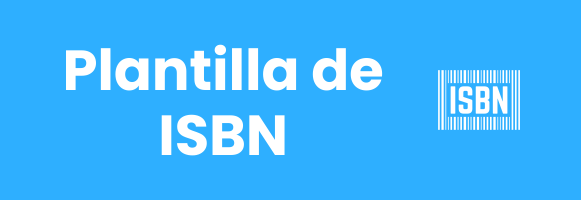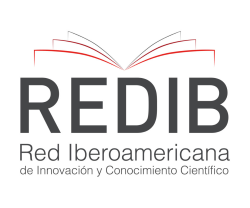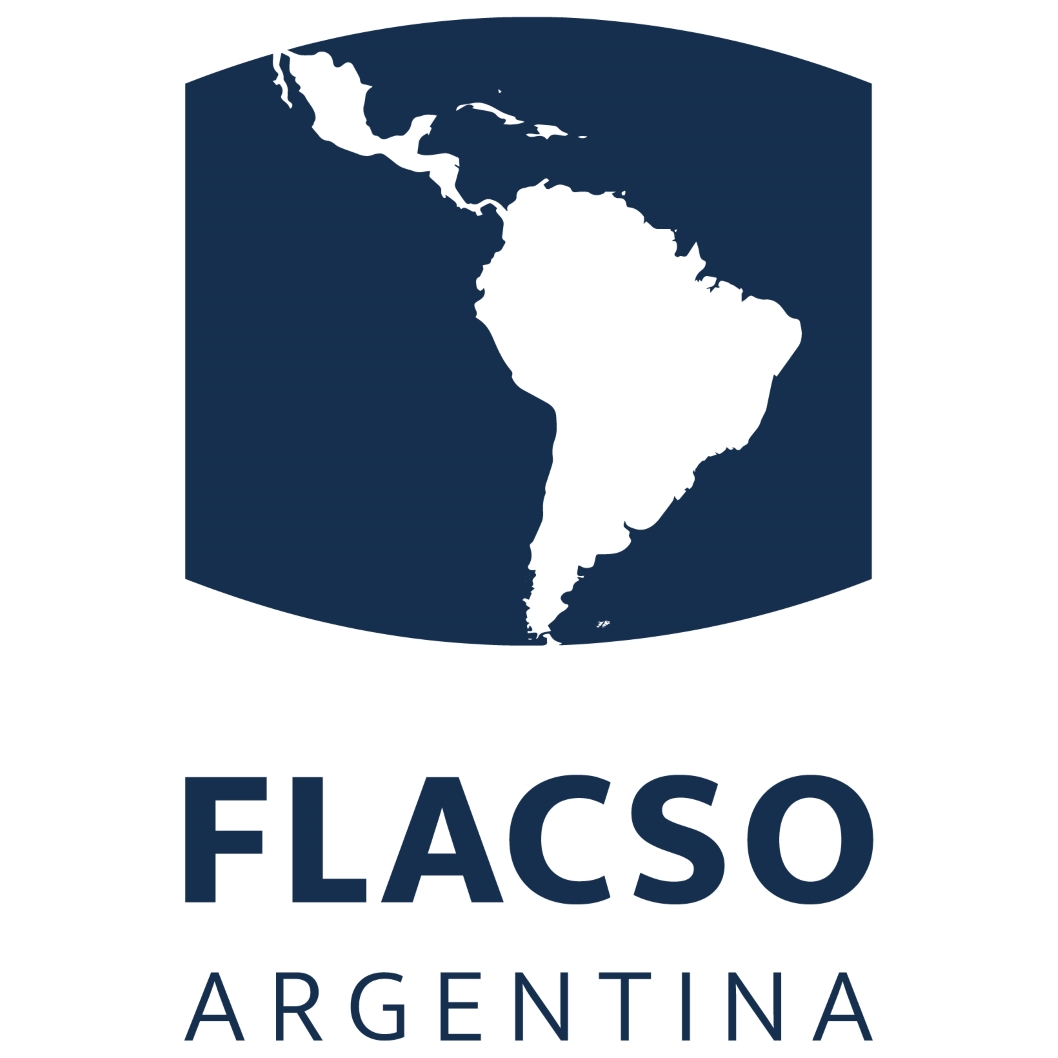Nuevos avances farmacologicos y no farmacologicos en diabetes tipo 1, revision de las nuevas fronteras y retos en una enfermedad endocrina compleja
Resumen
La diabetes tipo 1 (DT1) es causada por la destrucción autoinmune de las células β productoras de insulina ubicadas en el páncreas endocrino en áreas conocidas como islotes de Langerhans. El estándar de atención actual para la DT1 es la terapia de reemplazo de insulina exógena. Los desarrollos recientes en este campo incluyen el sistema híbrido de circuito cerrado para la administración de insulina regulada e insulinas de acción prolongada. Los estudios clínicos sobre predicción y prevención de complicaciones asociadas a la diabetes han demostrado la importancia del tratamiento temprano y el control de la glucosa para reducir el riesgo de desarrollar complicaciones diabéticas. El trasplante de islotes primarios ofrece un enfoque eficaz para el tratamiento de pacientes con DT1. Sin embargo, esta estrategia se ve obstaculizada por desafíos como la disponibilidad limitada de islotes, la muerte extensa de las células de los islotes, y mal injerto vascular de los islotes después del trasplante. En consecuencia, actualmente se están realizando esfuerzos considerables para mejorar la eficiencia del trasplante de islotes mediante el aprovechamiento de las acciones beneficiosas de las células madre. Esta revisión brindará una descripción general de las opciones terapéuticas actualmente disponibles para la DT1 y analizará la creciente evidencia que respalda el uso de enfoques con células madre para mejorar los resultados terapeuticos
Descargas
Citas
Abramson, Alex, Ester Caffarel-Salvador, Minsoo Khang, David Dellal, David Silverstein, Yuan Gao, Morten Revsgaard Frederiksen, Andreas Vegge, František Hubálek, Jorrit J. Water, Anders V. Friderichsen, Johannes Fels, Rikke Kaae Kirk, Cody Cleveland, Joy Collins, Siddartha Tamang, Alison Hayward, Tomas Landh, Stephen T. Buckley, Niclas Roxhed, Ulrik Rahbek, Robert Langer, and Giovanni Traverso. 2019. “An Ingestible Self-Orienting System for Oral Delivery of Macromolecules.” Science (New York, N.Y.) 363(6427):611–15. doi: 10.1126/SCIENCE.AAU2277.
Ahlqvist, Emma, Petter Storm, Annemari Käräjämäki, Mats Martinell, Mozhgan Dorkhan, Annelie Carlsson, Petter Vikman, Rashmi B. Prasad, Dina Mansour Aly, Peter Almgren, Ylva Wessman, Nael Shaat, Peter Spégel, Hindrik Mulder, Eero Lindholm, Olle Melander, Ola Hansson, Ulf Malmqvist, Åke Lernmark, Kaj Lahti, Tom Forsén, Tiinamaija Tuomi, Anders H. Rosengren, and Leif Groop. 2018. “Novel Subgroups of Adult-Onset Diabetes and Their Association with Outcomes: A Data-Driven Cluster Analysis of Six Variables.” The Lancet Diabetes and Endocrinology 6(5):361–69. doi: 10.1016/S2213-8587(18)30051-2.
Ahmed, Fahad W., Rachel Rider, Michael Glanville, Kilimangalam Narayanan, Salman Razvi, and Jolanta U. Weaver. 2016. “Metformin Improves Circulating Endothelial Cells and Endothelial Progenitor Cells in Type 1 Diabetes: MERIT Study.” Cardiovascular Diabetology 15(1):1–10. doi: 10.1186/S12933-016-0413-6/FIGURES/3.
Albiero, Mattia, Angelo Avogaro, and Gian Paolo Fadini. 2013. “Restoring Stem Cell Mobilization to Promote Vascular Repair in Diabetes.” Vascular Pharmacology 58(4):253–58. doi: 10.1016/J.VPH.2013.01.003.
An, Duo, Alan Chiu, James A. Flanders, Wei Song, Dahua Shou, Yen Chun Lu, Lars G. Grunnet, Louise Winkel, Camilla Ingvorsen, Nicolaj Strøyer Christophersen, Johannes Josef Fels, Fredrik Wolfhagen Sand, Yewei Ji, Ling Qi, Yehudah Pardo, Dan Luo, Meredith Silberstein, Jintu Fan, and Minglin Ma. 2018. “Designing a Retrievable and Scalable Cell Encapsulation Device for Potential Treatment of Type 1 Diabetes.” Proceedings of the National Academy of Sciences of the United States of America 115(2):E263–72. doi: 10.1073/PNAS.1708806115.
Van Baar, Michaël J. B., Charlotte C. Van Ruiten, Marcel H. A. Muskiet, Liselotte Van Bloemendaal, Richard G. IJzerman, and Daniël H. Van Raalte. 2018. “SGLT2 Inhibitors in Combination Therapy: From Mechanisms to Clinical Considerations in Type 2 Diabetes Management.” Diabetes Care 41(8):1543–56. doi: 10.2337/DC18-0588.
Bai, Lijun, Bernard E. Tuch, Bernhard Hering, and Ann M. Simpson. 2002. “Fetal Pig Beta Cells Are Resistant to the Toxic Effects of Human Cytokines.” Transplantation 73(5):714–22. doi: 10.1097/00007890-200203150-00010.
Ballinger, Walter F., and Paul E. Lacy. 1972. “Transplantation of Intact Pancreatic Islets in Rats.” Surgery 72(2):175–86.
Banting, F. G., C. H. Best, J. B. Collip, W. R. Campbell, and A. A. Fletcher. 1922. “Pancreatic Extracts in the Treatment of Diabetes Mellitus.” Canadian Medical Association Journal 12(3):141.
Bekiari, Eleni, Konstantinos Kitsios, Hood Thabit, Martin Tauschmann, Eleni Athanasiadou, Thomas Karagiannis, Anna Bettina Haidich, Roman Hovorka, and Apostolos Tsapas. 2018. “Artificial Pancreas Treatment for Outpatients with Type 1 Diabetes: Systematic Review and Meta-Analysis.” The BMJ 361. doi: 10.1136/BMJ.K1310.
Bell, Gillian I., Michael T. Meschino, Jennifer M. Hughes-Large, Heather C. Broughton, Anargyros Xenocostas, and David A. Hess. 2012. “Combinatorial Human Progenitor Cell Transplantation Optimizes Islet Regeneration through Secretion of Paracrine Factors.” Stem Cells and Development 21(11):1863–76. doi: 10.1089/SCD.2011.0634.
Bergenstal, Richard M., Satish Garg, Stuart A. Weinzimer, Bruce A. Buckingham, Bruce W. Bode, William V. Tamborlane, and Francine R. Kaufman. 2016. “Safety of a Hybrid Closed-Loop Insulin Delivery System in Patients With Type 1 Diabetes.” JAMA 316(13):1407–8. doi: 10.1001/JAMA.2016.11708.
Bluestone, Jeffrey A., Jane H. Buckner, Mark Fitch, Stephen E. Gitelman, Shipra Gupta, Marc K. Hellerstein, Kevan C. Herold, Angela Lares, Michael R. Lee, Kelvin Li, Weihong Liu, S. Alice Long, Lisa M. Masiello, Vinh Nguyen, Amy L. Putnam, Mary Rieck, Peter H. Sayre, and Qizhi Tang. 2015. “Type 1 Diabetes Immunotherapy Using Polyclonal Regulatory T Cells.” Science Translational Medicine 7(315). doi: 10.1126/SCITRANSLMED.AAD4134.
Blyszczuk, Przemyslaw, Jaroslaw Czyz, Gabriela Kania, Martin Wagner, Ursula Roll, Luc St-Onge, and Anna M. Wobus. 2003. “Expression of Pax4 in Embryonic Stem Cells Promotes Differentiation of Nestin-Positive Progenitor and Insulin-Producing Cells.” Proceedings of the National Academy of Sciences of the United States of America 100(3):998–1003. doi: 10.1073/PNAS.0237371100/ASSET/6A6A3A8F-A3E0-40D6-97FA-DC1F4F328F8A/ASSETS/GRAPHIC/PQ0237371005.JPEG.
Borg, Danielle J., Marc Weigelt, Carmen Wilhelm, Michael Gerlach, Marc Bickle, Stephan Speier, Ezio Bonifacio, and Angela Hommel. 2014. “Mesenchymal Stromal Cells Improve Transplanted Islet Survival and Islet Function in a Syngeneic Mouse Model.” Diabetologia 57(3):522–31. doi: 10.1007/S00125-013-3109-4.
Bottino, Rita, Michael F. Knoll, Carmela A. Knoll, Suzanne Bertera, and Massimo M. Trucco. 2018. “The Future of Islet Transplantation Is Now.” Frontiers in Medicine 5(JUL). doi: 10.3389/FMED.2018.00202.
Boughton, C. K., and R. Hovorka. 2019. “Is an Artificial Pancreas (Closed-Loop System) for Type 1 Diabetes Effective?” Diabetic Medicine : A Journal of the British Diabetic Association 36(3):279–86. doi: 10.1111/DME.13816.
Brandhorst, D., H. Brandhorst, S. Acreman, S. W. Schive, H. Bjørnson Scholz, and P. R. V. Johnson. 2017. “Hypoxia-Induced Damage in Human Islets Is Reduced With the Use of Mesenchymal Stem Cell-Preconditioned Medium.” Transplantation Proceedings 49(10):2330–32. doi: 10.1016/J.TRANSPROCEED.2017.11.003.
Carlsson, Per Ola, Daniel Espes, Amir Sedigh, Avi Rotem, Baruch Zimerman, Helena Grinberg, Tali Goldman, Uriel Barkai, Yuval Avni, Gunilla T. Westermark, Lina Carlbom, Håkan Ahlström, Olof Eriksson, Johan Olerud, and Olle Korsgren. 2018. “Transplantation of Macroencapsulated Human Islets within the Bioartificial Pancreas ΒAir to Patients with Type 1 Diabetes Mellitus.” American Journal of Transplantation : Official Journal of the American Society of Transplantation and the American Society of Transplant Surgeons 18(7):1735–44. doi: 10.1111/AJT.14642.
Castro-Manrreza, Marta E., and Juan J. Montesinos. 2015. “Immunoregulation by Mesenchymal Stem Cells: Biological Aspects and Clinical Applications.” Journal of Immunology Research 2015. doi: 10.1155/2015/394917.
Cheng, Sam Tsz Wai, Lihua Chen, Stephen Yu Ting Li, Eric Mayoux, and Po Sing Leung. 2016. “The Effects of Empagliflozin, an SGLT2 Inhibitor, on Pancreatic β-Cell Mass and Glucose Homeostasis in Type 1 Diabetes.” PloS One 11(1). doi: 10.1371/JOURNAL.PONE.0147391.
Clemente-Casares, Xavier, Jesus Blanco, Poornima Ambalavanan, Jun Yamanouchi, Santiswarup Singha, Cesar Fandos, Sue Tsai, Jinguo Wang, Nahir Garabatos, Cristina Izquierdo, Smriti Agrawal, Michael B. Keough, V. Wee Yong, Eddie James, Anna Moore, Yang Yang, Thomas Stratmann, Pau Serra, and Pere Santamaria. 2016. “Expanding Antigen-Specific Regulatory Networks to Treat Autoimmunity.” Nature 530(7591):434–40. doi: 10.1038/NATURE16962.
Cohen, Ohad, Sebastiano Filetti, Javier Castaneda, Marianna Maranghi, and Mariela Glandt. 2016. “When Intensive Insulin Therapy (MDI) Fails in Patients With Type 2 Diabetes: Switching to GLP-1 Receptor Agonist Versus Insulin Pump.” Diabetes Care 39 Suppl 2:S180-6. doi: 10.2337/DCS15-3029.
Contreras, Juan L., Dong Xie, Jimmy Mays, Cheryl A. Smyth, Christopher Eckstein, Firoz G. Rahemtulla, Carlton J. Young, J. Anthony Thompson, Guadalupe Bilbao, David T. Curiel, and Devin E. Eckhoff. 2004. “A Novel Approach to Xenotransplantation Combining Surface Engineering and Genetic Modification of Isolated Adult Porcine Islets.” Surgery 136(3):537–47. doi: 10.1016/j.surg.2004.05.031.
Delaune, Vaihere, Christian Toso, Pierre Yves Benhamou, Anne Wojtusciszyn, Laurence Kessler, Florence Slits, Sandrine Demuylder-Mischler, Nadine Pernin, Sandrine Lablanche, Lorenzo A. Orci, Graziano Oldani, Philippe Morel, Thierry Berney, and Stéphanie Lacotte. 2016. “Alloimmune Monitoring after Islet Transplantation: A Prospective Multicenter Assessment of 25 Recipients.” Cell Transplantation 25(12):2259–68. doi: 10.3727/096368916X692023/ASSET/IMAGES/LARGE/10.3727_096368916X692023-FIG2.JPEG.
Deschepper, M., K. Oudina, B. David, V. Myrtil, C. Collet, M. Bensidhoum, D. Logeart-Avramoglou, and H. Petite. 2011. “Survival and Function of Mesenchymal Stem Cells (MSCs) Depend on Glucose to Overcome Exposure to Long-Term, Severe and Continuous Hypoxia.” Journal of Cellular and Molecular Medicine 15(7):1505. doi: 10.1111/J.1582-4934.2010.01138.X.
Duggleby, Richard, Robert David Danby, J. Alejandro Madrigal, and Aurore Saudemont. 2018. “Clinical Grade Regulatory CD4+ T Cells (Tregs): Moving Toward Cellular-Based Immunomodulatory Therapies.” Frontiers in Immunology 9(FEB). doi: 10.3389/FIMMU.2018.00252.
Eggenhofer, E., V. Benseler, A. Kroemer, F. C. Popp, E. K. Geissler, H. J. Schlitt, C. C. Baan, M. H. Dahlke, and M. J. Hoogduijn. 2012. “Mesenchymal Stem Cells Are Short-Lived and Do Not Migrate beyond the Lungs after Intravenous Infusion.” Frontiers in Immunology 3(SEP). doi: 10.3389/FIMMU.2012.00297.
Egro, Francesco Maria. 2013. “Why Is Type 1 Diabetes Increasing?” Journal of Molecular Endocrinology 51(1). doi: 10.1530/JME-13-0067.
Eisenbarth, G. S. 1986. “Type I Diabetes Mellitus. A Chronic Autoimmune Disease.” The New England Journal of Medicine 314(21):1360–68. doi: 10.1056/NEJM198605223142106.
Ekser, Burcin, and David Kc Cooper. 2010. “Overcoming the Barriers to Xenotransplantation: Prospects for the Future.” Expert Review of Clinical Immunology 6(2):219. doi: 10.1586/ECI.09.81.
Evans, M., P. M. Schumm-Draeger, J. Vora, and A. B. King. 2011. “A Review of Modern Insulin Analogue Pharmacokinetic and Pharmacodynamic Profiles in Type 2 Diabetes: Improvements and Limitations.” Diabetes, Obesity & Metabolism 13(8):677–84. doi: 10.1111/J.1463-1326.2011.01395.X.
Evron, Yoav, Clark K. Colton, Barbara Ludwig, Gordon C. Weir, Baruch Zimermann, Shiri Maimon, Tova Neufeld, Nurit Shalev, Tali Goldman, Assaf Leon, Karina Yavriyants, Noa Shabtay, Tania Rozenshtein, Dimitri Azarov, Amanda R. DiIenno, Anja Steffen, Paul de Vos, Stefan R. Bornstein, Uriel Barkai, and Avi Rotem. 2018. “Long-Term Viability and Function of Transplanted Islets Macroencapsulated at High Density Are Achieved by Enhanced Oxygen Supply.” Scientific Reports 2018 8:1 8(1):1–13. doi: 10.1038/s41598-018-23862-w.
Fadini, Gian Paolo, and Angelo Avogaro. 2013. “Diabetes Impairs Mobilization of Stem Cells for the Treatment of Cardiovascular Disease: A Meta-Regression Analysis.” International Journal of Cardiology 168(2):892–97. doi: 10.1016/J.IJCARD.2012.10.089.
Farina, Marco, Andrea Ballerini, Daniel W. Fraga, Eugenia Nicolov, Matthew Hogan, Danilo Demarchi, Francesco Scaglione, Omaima M. Sabek, Philip Horner, Usha Thekkedath, Osama A. Gaber, and Alessandro Grattoni. 2017. “3D Printed Vascularized Device for Subcutaneous Transplantation of Human Islets.” Biotechnology Journal 12(9). doi: 10.1002/BIOT.201700169.
Forbes, Josephine M., and Mark E. Cooper. 2013. “Mechanisms of Diabetic Complications.” Physiological Reviews 93(1):137–88. doi: 10.1152/PHYSREV.00045.2011.
Foster, Jayne L., Georgia Williams, Lindy J. Williams, and Bernard E. Tuch. 2007. “Differentiation of Transplanted Microencapsulated Fetal Pancreatic Cells.” Transplantation 83(11):1440–48. doi: 10.1097/01.TP.0000264555.46417.7D.
Frandsen, Christian S., Thomas F. Dejgaard, Jens J. Holst, Henrik U. Andersen, Birger Thorsteinsson, and Sten Madsbad. 2015. “Twelve-Week Treatment With Liraglutide as Add-on to Insulin in Normal-Weight Patients With Poorly Controlled Type 1 Diabetes: A Randomized, Placebo-Controlled, Double-Blind Parallel Study.” Diabetes Care 38(12):2250–57. doi: 10.2337/DC15-1037.
Derechos de autor 2023 Juan Sebastián Theran león ;Luis Andrés Dulcey Sarmiento;Laura Yibeth Esteban Badillo;Stephania Julieth Nariño Anaya ;Roberto Carlos Maiguel Cardenas;Herly Ximena Trujillo Ávila

Esta obra está bajo licencia internacional Creative Commons Reconocimiento 4.0.











.png)




















.png)
1.png)


